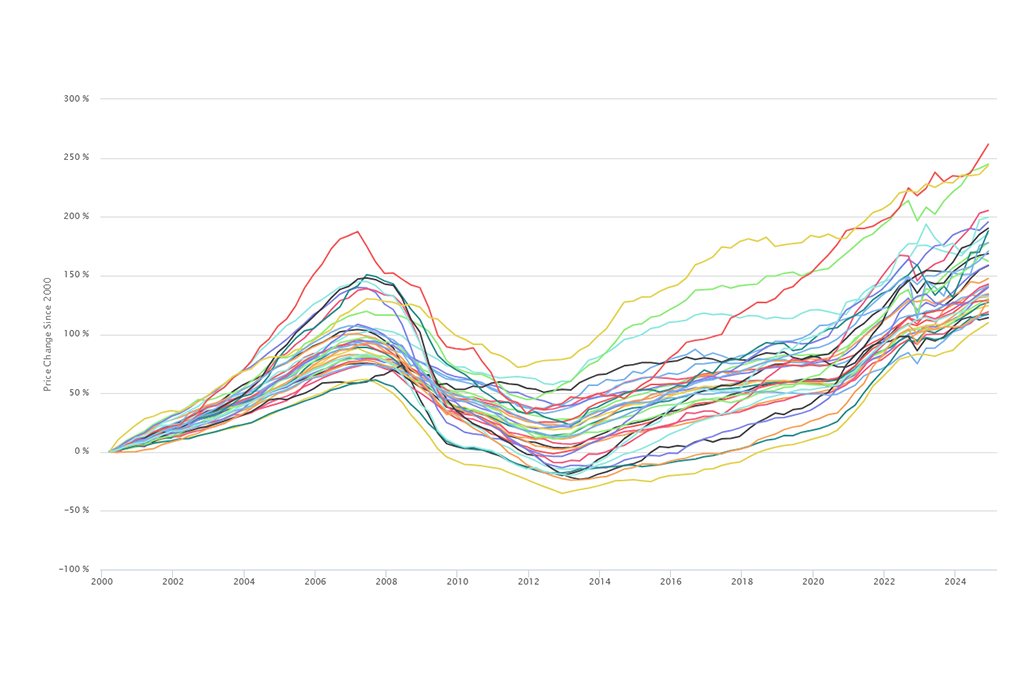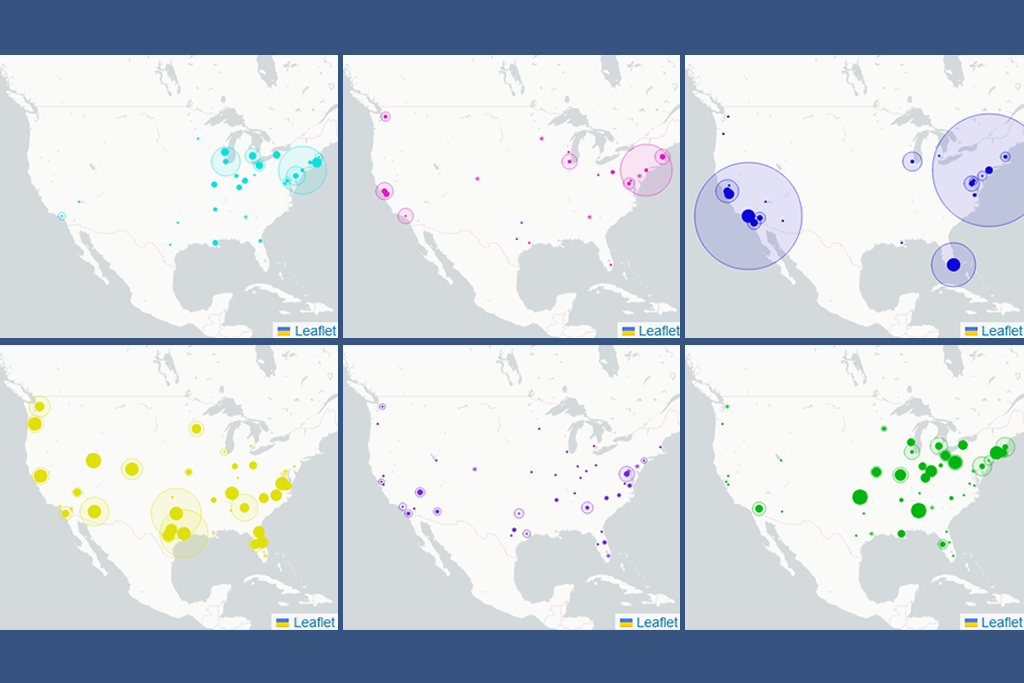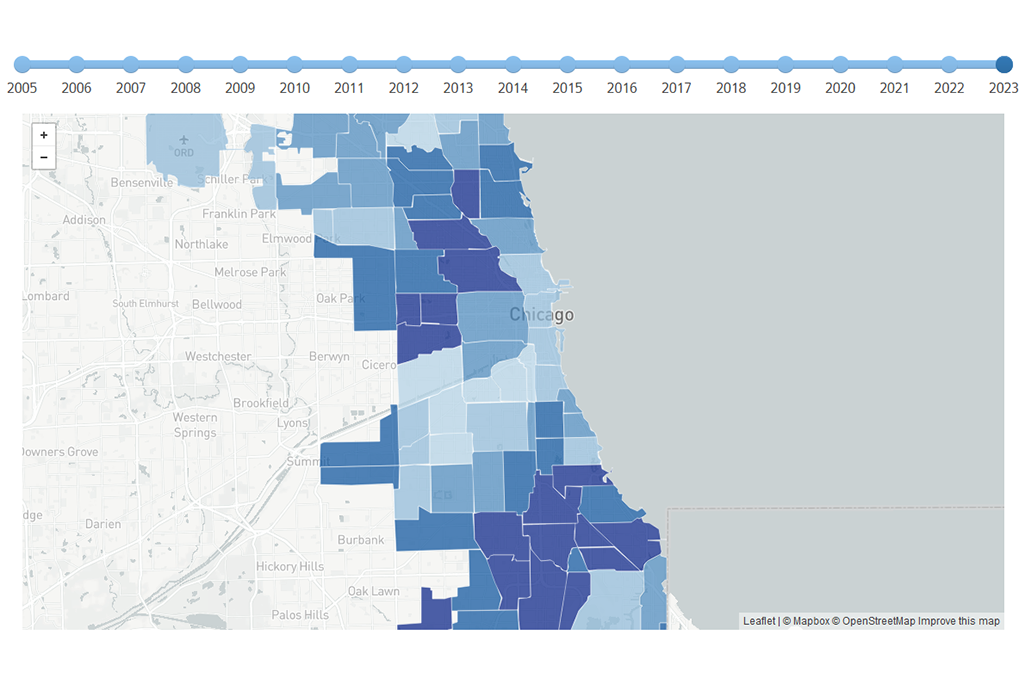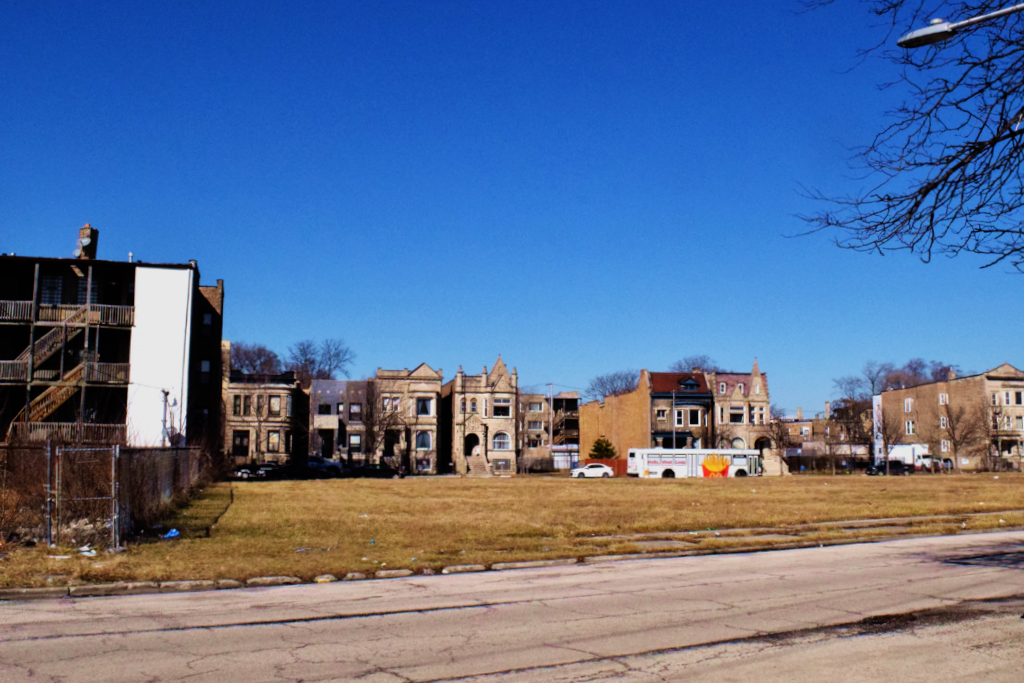The Institute for Housing Studies (IHS) is a research center based at DePaul University that provides analysis and data to inform affordable housing policy and practice. Read more »
Featured research
Understanding Chicago’s Rental Affordability Challenges: A Review of Data, Trends, and Solutions
In advance of our upcoming State of Rental in Chicago report, this blog presents the newest data on changes in the rental housing stock and the demographic and socioeconomic makeup of renters, offering important context for policymakers exploring solutions to Chicago’s rental market affordability challenges.
New Data Added to IHS’s Housing Market Indicators Data Portal
IHS recently updated its Housing Market Indicators data portal to include 2024 data on neighborhood demographic and economic characteristics. These data will provide portal users with additional context to understand factors that may affect housing market activity in their communities.
Presenting Data on Housing Affordability and Supply Challenges in Chicago
In May 2025, IHS Executive Director Geoff Smith shared data on affordability at a webinar hosted by the Federal Reserve Bank of Chicago.
Supporting Community-Led Strategies to Revitalize Vacant Land
IHS has provided Technical Assistance to various community groups looking to fight disinvestment by repurposing vacant land in Chicago.
Cook County House Price Index: Fourth Quarter 2024
This update of the Institute for Housing Studies (IHS) Cook County House Price Index highlights changing prices for single-family homes through the fourth quarter of 2024. Data are included for 17 City of Chicago submarkets and 18 submarkets primarily in suburban Cook County.
Data to Understand Housing Affordability in the Northeastern Illinois Region
IHS collaborated with CMAP to create updated Local Housing Profiles, which display housing market data for various geographies in the Northeastern Illinois region.
Strategies to Support Community Land Trusts in Illinois
The Illinois Community Land Trust Task Force met throughout 2024 to determine ways the State could support CLTs in Illinois. The Task Force's final report, assembled by IHS, is available to read here.
Using Data to Break Up the NOAH Monolith
IHS and the Preservation Compact recently collaborated on a project to inform the development of local and national policies supporting the preservation of unsubsidized, lower-cost rental housing.
Examining the Role of Corporate Landlords in the Chicago Region
IHS and DePaul Professor Dr. Amanda Kass explored outcomes of single-family homes purchased by three large corporate landlords in the Chicago region in 2013.
IHS Research Featured in HUD's Cityscape Journal
IHS is excited to announce that our research on the disappearance of 2 to 4 unit buildings in Chicago was published in the Spring 2024 issue of Cityscape!
An Update to IHS’s Housing Market Indicators Data Portal
IHS recently updated its Housing Market Indicators data portal to include new data on neighborhood demographic and economic characteristics. These data will provide portal users with additional context to understand factors that may affect housing market activity in their communities.
Data Highlighting the ETOD Implications of Vacant Land Near Transit
As part of a recent collaborative project to understand the implications of vacant land near transit, IHS developed an in-depth analysis of City- and privately-owned vacant land near CTA train stations across Chicago. This report highlights data and analysis developed as part of this work.
Housing market indicators data portal
Search for, view, and download indicators of housing market health in the Chicago region, including foreclosure auctions & filing activity, mortgage activity, and property sales activity.











